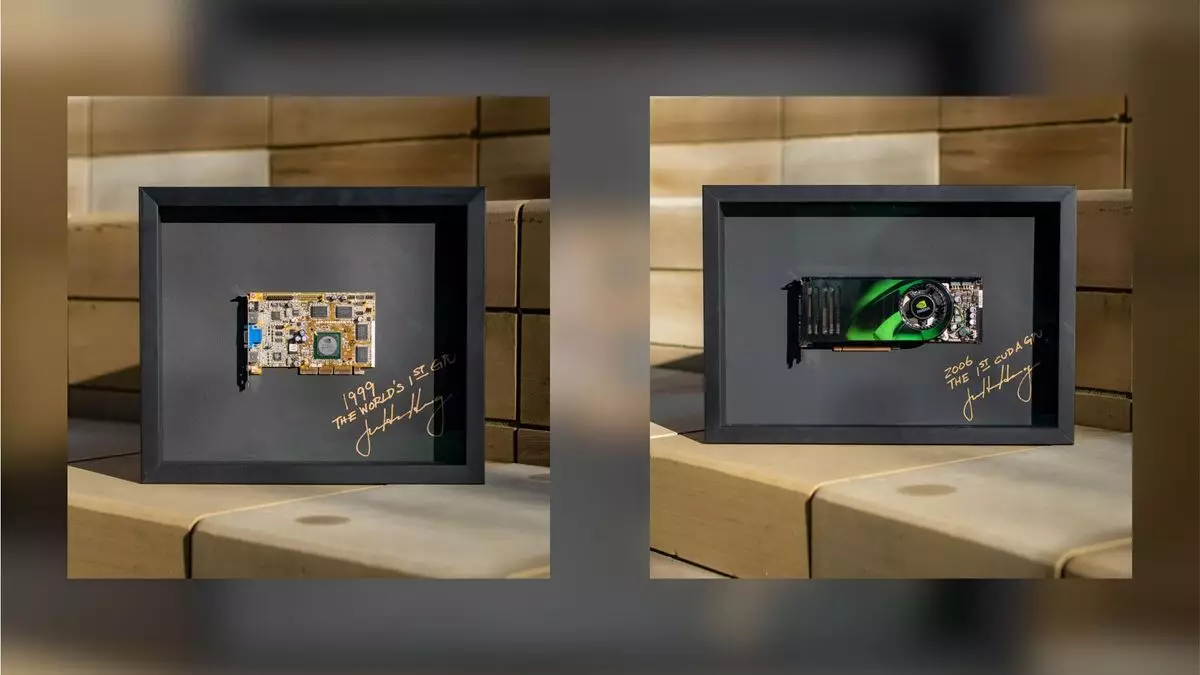Nvidia has firmly established itself as a dominant force in the PC gaming and graphics processing market since its inception. As the company approaches a milestone 25-year anniversary, their promotional strategies are becoming increasingly dynamic. The Consumer Electronics Show (CES), one of the most significant technology exhibitions in the world, presents a prime opportunity for Nvidia to showcase its innovations and solidify its reputation as a pioneer in the field of graphics technology. From their early days with the GeForce 256 to the cutting-edge RTX series, Nvidia’s product evolution mirrors advances in gaming technology and consumer expectations.
In a nostalgic twist to ramp up excitement for their CES appearance, Nvidia has initiated a giveaway campaign. They have announced that attendees can win some of their most iconic graphics cards, starting with the GeForce 256, hailed as the world’s first GPU. The card debuted on October 11, 1999, and encapsulates the inception of gaming graphics technology. Currently manufactured using a custom 5 nm process, Nvidia contrasts this with the historical technology of the GeForce 256, which was produced using a 220 nm CMOS process, underlining the dramatic advancements in fabrication techniques and GPU architecture over the years.
This initiative is not merely a marketing gimmick; it provides fans and consumers a chance to engage directly with the brand’s history. By inviting participants to comment with the hashtag “#GeForceGreats” on their announcement tweet, Nvidia cleverly taps into social media’s viral nature to build an engaged community. This hashtag serves not only as a tool for the giveaway but also signals the company’s intent to generate buzz surrounding their upcoming products.
Following the GeForce 256, Nvidia also teased the GeForce 8800 Ultra, known as the first CUDA architecture GPU. The significance of this announcement lies in its reveal of Nvidia’s commitment to continuous innovation in the realm of GPU technology. The 8800 Ultra was groundbreaking—an embodiment of unified shader architecture that allowed for more efficient processing, making it an ideal choice for gamers and content creators alike.
The inclusion of historical highlights in graphics processing can be seen as Nvidia’s way of not only celebrating their journey but also underscoring the importance of innovation in technology. As gaming demands more from hardware, Nvidia has often been at the forefront, from facilitating complex rendering tasks to enabling real-time ray tracing in modern gaming.
While these nostalgic giveaways are captivating, the real excitement lies in what Nvidia will unveil during CES. Rumors suggest that the company may reveal the much-awaited RTX 50 series graphics cards, such as the RTX 5080 and RTX 5090. This speculation is laden with potential as gamers and tech enthusiasts eagerly await the next level of graphics performance. The strategic use of a buildup campaign, including regular Twitch streams and engagement through social media, signals a calculated effort by Nvidia to not only maintain but enhance its already substantial fanbase.
Through countdowns, mystery giveaways, and “total hype” trackers, Nvidia is clearly preparing for significant announcements. These tactics serve to create a sustained public interest that will culminate in the live unveiling at CES. Such efforts reflect an acute understanding of marketing within the tech industry, utilizing nostalgia to foster a connection while simultaneously driving excitement for new innovations.
As the gaming community anticipates Nvidia’s CES briefing, it becomes evident that the company’s strategy merges historical reverence with future innovation. The emphasis on “world firsts” illustrates a comprehensive narrative about Nvidia’s industry-leading position over the last two and a half decades. By leveraging their past achievements while pushing forward into the evolving landscape of graphics technology, Nvidia is not just celebrating its legacy—it is setting the stage for what could be a new era in gaming graphics. This integration of history with forward-thinking innovation not only solidifies Nvidia’s reputation but also keeps its audience eagerly engaged and ready for what’s next in the world of PC gaming.


Leave a Reply